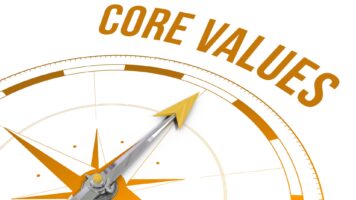Me, Thee or We: 6 Steps to Making Good Leadership Decisions

Personal Development
May 10, 2012
Jane Perdue
Executive Director, The Jane Group
Topics
Daniel Pink, decision making, Leadership, motivation“The boss told me this morning my decision to implement the new social media strategy wasn’t a good one.”
“Did he say why he thought that way?”
“He said I didn’t do enough research or involve the right stakeholders.”
“Did you do those things?”
“Sure, I did little research and talked to a couple people. But what I really did was my job, what he hired me to do: see a problem and fix it.”
Wow, talk about danger signs at the intersection of autonomy and collaboration!
In his thought-provoking book, Motivation, Daniel Pink says we’re motivated by a combination of purpose, mastery and autonomy. Who doesn’t love autonomy?! However, if we’re going to be a successful leader, autonomy must be balanced with collaboration -- another one of those both/and scenarios critical for success.
No doubt, there are times and situations, like a crisis or one of those-the-buck-stops-here scenarios when a party of one is the best decision-maker. Yet most of the time it’s more beneficial and productive to invite more people to the decision-making party. Thoughtful collaboration brings diversity of thought, inclusion and engaged participation.
6 steps to thoughtful and inclusive decision-making
I don’t advocate reams of analysis and organizational paralysis, just a simple decision-making process that assures solid involvement and a rich, thoughtful outcome:
Create a constructive environment. Have a focus group, take people out for a chat and coffee, mingle after the staff meeting — all good locales for sharing your preliminary thoughts and inviting alternate points of view.
Generate and explore good alternatives. As a leader creating solutions is part of your job. Just be sure that you’ve read enough, talked enough, and turned over enough rocks to have a full picture of the problem as well as potential solutions. Sometimes you find out that the problem you’re trying to solve isn’t the problem at all. As you explore, challenge (in a positive, professional way, of course!) the thinking of those involved as healthy debate is integral to productive collaboration.
Select the best outcome. Be thoughtful in analyzing the pros and cons of each solution. Ferret out unintended consequences before they happen. Balance the three-legged stool of people, principles and profits.
Validate your decision. Bounce the problem and proposed solution off an impartial third-party, someone with no skin in the game. Get a truly unbiased view of whether your solution is on the mark or misses it. Park the ego, and be willing to return to square one based on what you learn.
Communicate and communicate some more. Double-back with stakeholders (at all levels within the organization) to assure their buy-in. Talk to people who will be affected by the new system, process, etc. and weigh their feedback. Play angel’s advocate with yourself and with the decision-party team to test your assumptions and solutions to see if they hold water.
Make it so. Put the plan into place, create success measures (both quantitative and qualitative as appropriate) and use a thoughtful plan to monitor progress and maintain ongoing communications.
If you’ve followed this process, then you can say “I’ve done my job!”





I like what you said regarding getting a third-party person to validate your decision. Obviously someone who has something to gain/lose from the decision has a bias. So finding someone that is wise and trustworthy that has nothing invested in the decision seems smart.
Fresh eyes can be invaluable in bringing a new perspective. We get so caught up in what we’re doing that sometimes we close off options. Thanks much for sharing!
I like the process. It is a fairly involved process. Is there a methodology for determining which decisions are important enough to utilize the full process?